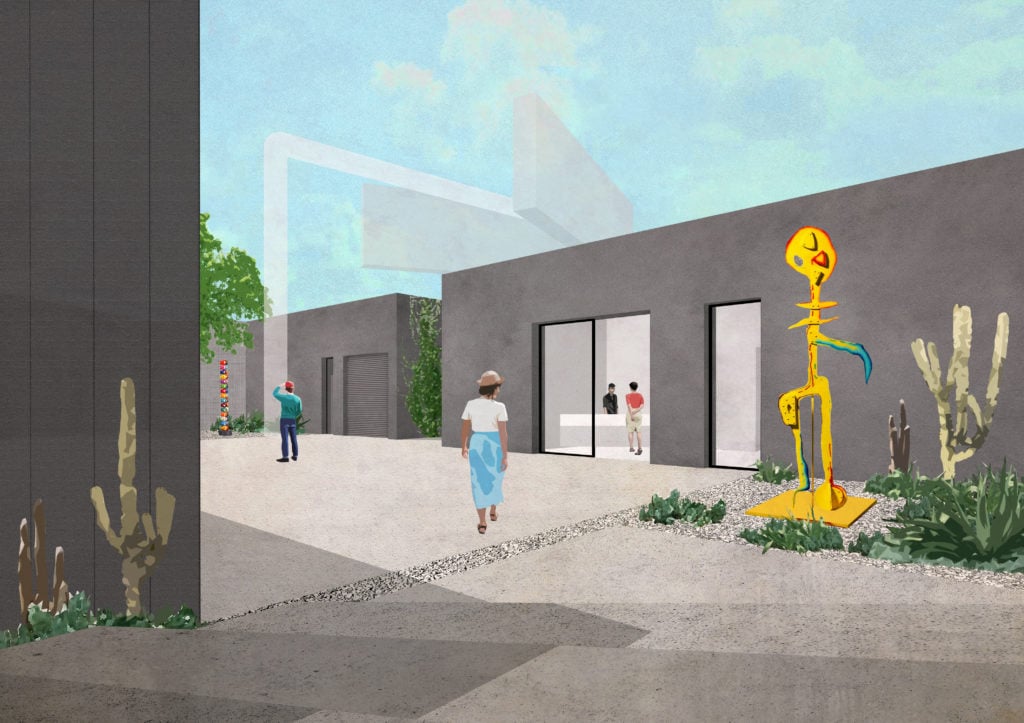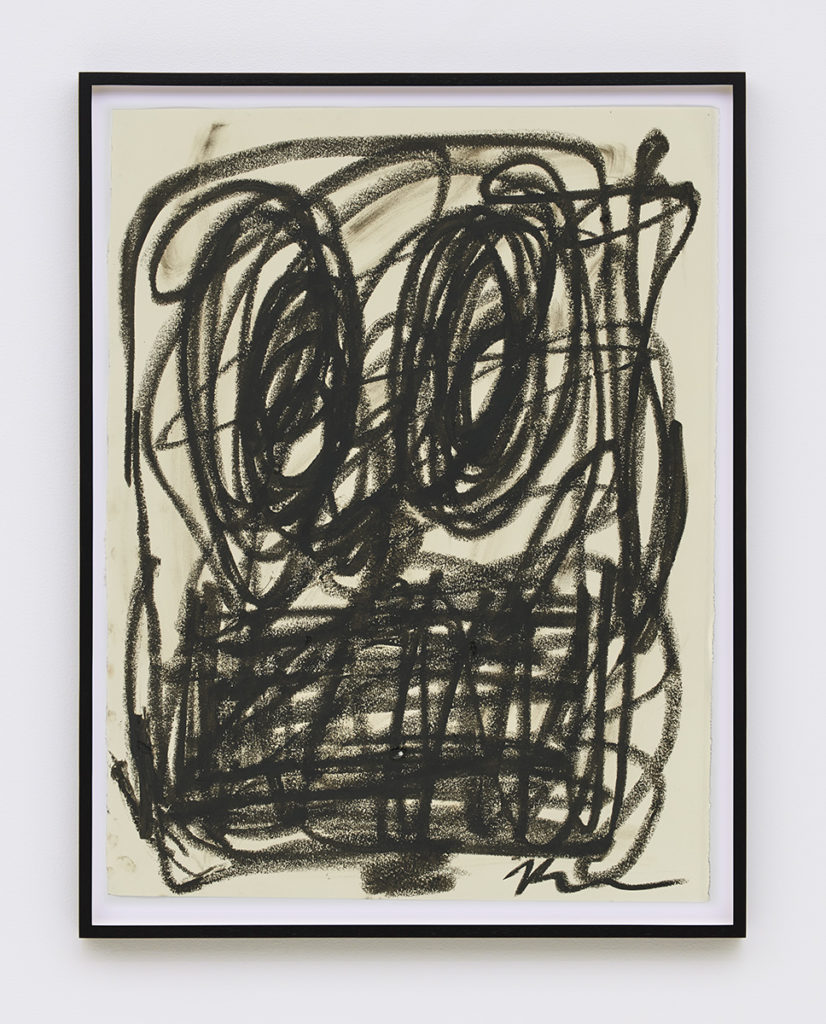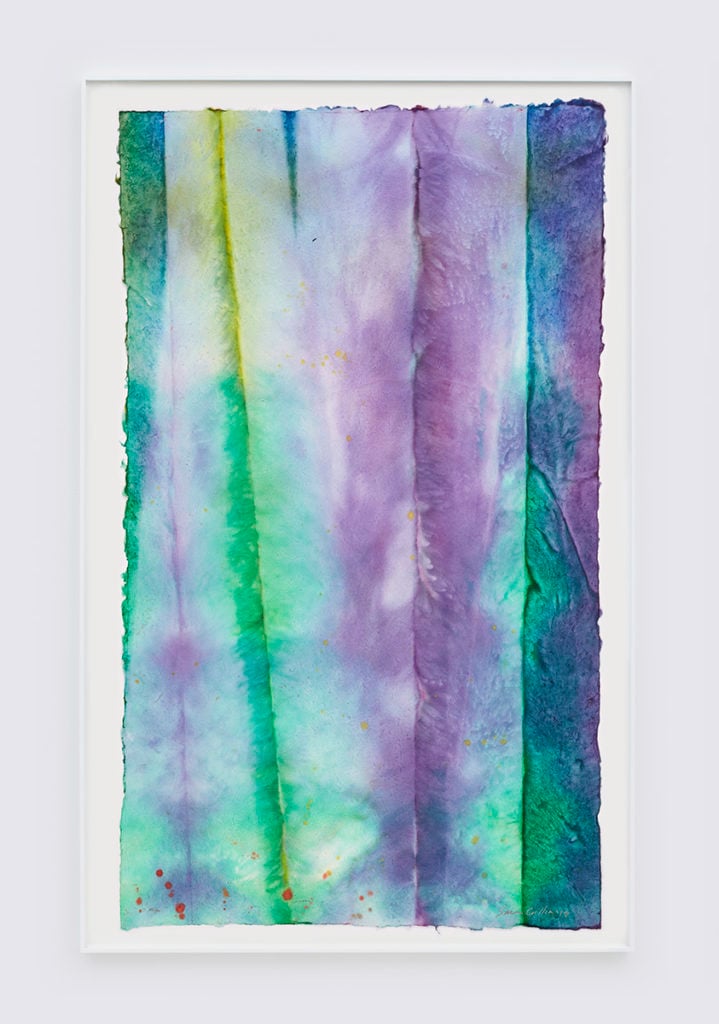Galleries
David Kordansky Gallery Is Launching an Online Viewing Room With an All-Star Sale That Benefits Climate Activism
The Los Angeles gallery will debut its new sales platform with works by Sam Gilliam, Jonas Wood, and others.

The Los Angeles gallery will debut its new sales platform with works by Sam Gilliam, Jonas Wood, and others.

Another respected dealer with market clout is embracing online sales through its own platform. David Kordansky announced this morning that the gallery will launch its inaugural online viewing room next month. And, at first, the sales it generates will go toward a cause greater than just the bottom line.
Kordansky will debut the initiative with a digital-only benefit exhibition titled “Artists for Climate Action,” which will be accessible through the gallery’s website beginning November 18 through December 20. All sales proceeds will be donated to organizations actively addressing the causes and effects of climate change. The show will feature works by an all-star squad of the gallery’s artists, including Sam Gilliam, Jonas Wood, Lauren Halsey, and many others, before ceding the virtual space to a yet-to-be-announced slate of curated exhibitions and artist projects.
Asked about the genesis of the online viewing room, gallery director Kurt Mueller told artnet News that the initiative was “overdue” in light of Kordansky’s history and near future. “We already conduct a significant amount of business by email and JPG,” he explained. “And as we expand physically—with a new gallery opening in LA next year and a growing roster—it only makes sense to expand virtually as well, to add depth to the exhibition program and the online experience of our artists’ work.”

Rashid Johnson, Untitled Anxious Drawing (2019). Courtesy of David Kordansky Gallery, Los Angeles.
Several of the pieces on offer in “Artists for Climate Action” were created specifically for the exhibition, including new works on paper by Huma Bhabha and Tala Madani, as well as a fresh drawing from Rashid Johnson’s “Anxious Man” series, and a new watercolor by Lesley Vance. Mueller attributes the enthusiasm partly to many of the artists’ pre-existing support for this cause, particularly Wood. This May, Wood consigned a new painting, Japanese Garden 3, to Christie’s New York to benefit Global Wildlife Conservation. The work sold for more than $4.9 million (including buyer’s premium)—more than seven times its pre-sale high estimate.
Kordansky and his team are hoping for similarly robust results in their online viewing room, and they believe they have reason for optimism based on their clients’ concerns for the planet. “We wanted to focus on a cause that our international and local audiences could all rally behind,” says Mueller. “Climate change affects everyone, and action to fight it is the most pressing issue we face as a global society.”
The gallery wants to fund that fight by donating to what Mueller terms “a diverse portfolio” of organizations, working from the local to the national level using complementary approaches including political, legal, educational, and grassroots action. Although the names of the organizations receiving funds won’t be announced until the close of the online exhibition, the gallery says that several of the projects are based in the greater Los Angeles area and seek to counteract oil drilling, food waste, and land degradation, among other causes.

Sam Gilliam, Construct (2018). Courtesy of David Kordansky, Los Angeles.
Kordansky joins a growing pool of dealers launching in-house digital showrooms in recent years. David Zwirner inaugurated the trend in January 2017, when it initiated an ongoing series of curated selling exhibitions through its website, with works priced from $1,000 to $500,000. Gagosian made a splash in June 2018 by debuting the first of its online viewing rooms timed to major events in the art-market calendar, some featuring multimillion-dollar works, and each only “open” for a few days.
Since that time, a lengthening list of dealers has followed suit in one way or another, including mega-gallery Hauser and Wirth; blue-chip outfits Mitchell-Innes & Nash, Lehmann Maupin, and Galerie Lelong; and more approachable spaces like Tribeca’s the Journal, whose Tennis Elbow project features one-week-only digital flash sales on a rolling basis.
For its part, Kordanksy’s online viewing room will take a traditional approach to the sales process. The interface will eschew a “click to buy” feature and live-chat assistance. Instead, all sales inquiries will materialize as emails sent to gallery staff for personal follow-up. “The Online Viewing Room is an extension, an expansion of the gallery, rather than a new way of doing business,” says Mueller. “We still want to prioritize engaging visitors, creating conversations, and building relationships.”
Still, the gallery hopes to stretch itself in other ways as its digital efforts continue to mature. The exhibitions and projects will have more targeted timing at the outset, but will eventually develop into a continuous program that could take a variety of shapes, according to Mueller.
“There’s a lot of freedom to an online presentation—even the obvious limitations precipitate creative thinking—and we want to be as thoughtful with each project as we are with our gallery exhibitions and fair presentations.”